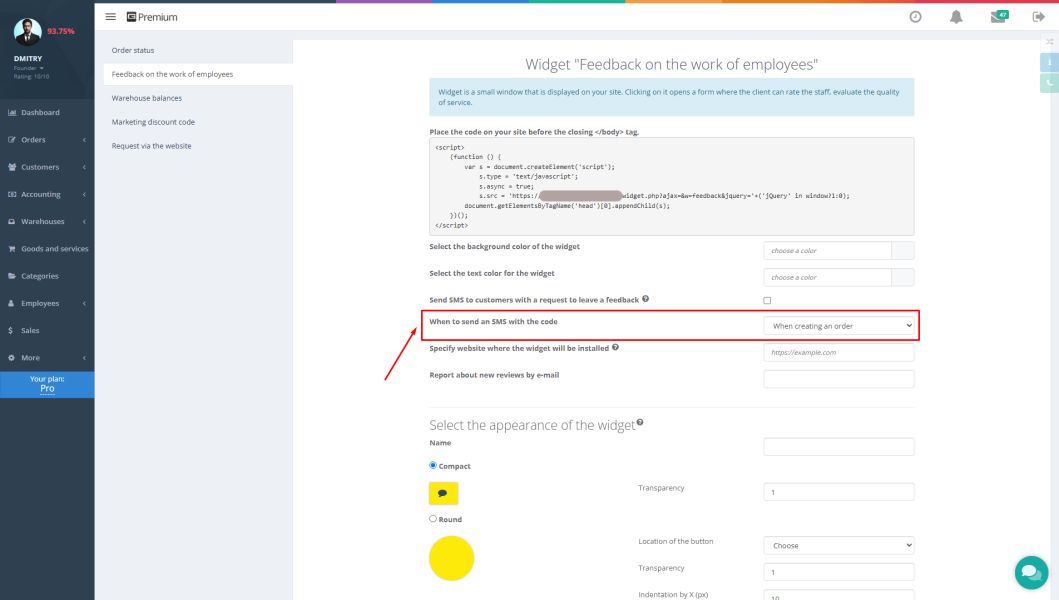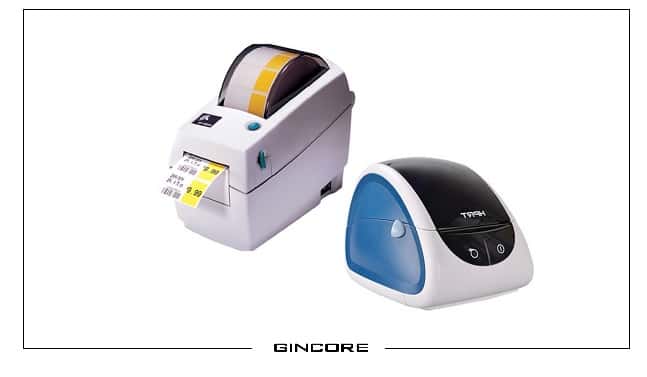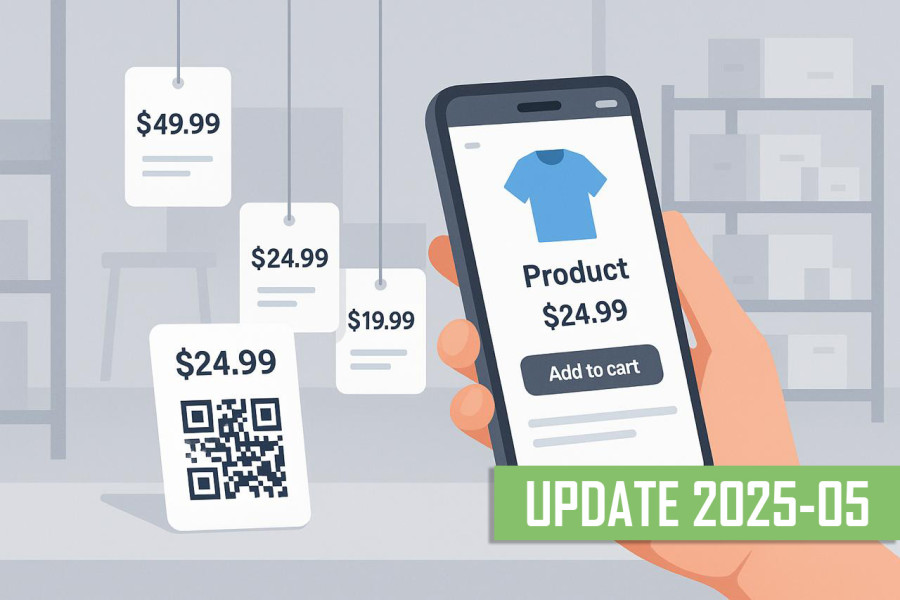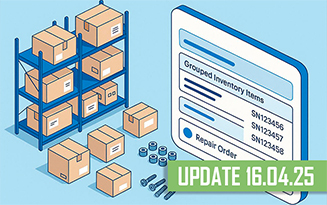Ever feel like you're drowning in a sea of to-do lists, yet somehow the truly important tasks remain untouched? Or maybe you're pouring energy into your business, wondering which of your efforts really move the needle? If this sounds familiar, then understanding and applying the 80/20 principle in business could be the game-changer you've been searching for. This isn't just a catchy phrase; it's a powerful observation with profound implications for how we approach work, manage businesses, and even live our lives.
This comprehensive guide will not only explore the depths of this principle but also provide actionable strategies to leverage it for transformative growth and efficiency.
What is the 80/20 Principle (Pareto Principle)?
The 80/20 Principle, also known as the Pareto Principle, the Law of the Vital Few, or the Principle of Factor Sparsity, posits that for many events, roughly 80% of the effects come from 20% of the causes.
The Core Idea: Unequal Distribution
At its heart, the Pareto Principle is an observation about unequal distribution. It suggests that inputs and outputs, causes and effects, efforts and results rarely balance out evenly. Instead, a small percentage of factors often contribute to a disproportionately large percentage of outcomes.
Key takeaway: It's not always about working harder, but about working smarter by identifying and focusing on that critical 20%. This isn't a strict mathematical law but a powerful empirical observation seen across various domains. The actual numbers might vary (e.g., 70/30, 95/5), but the core concept of a significant imbalance remains.
The Genesis: Vilfredo Pareto and Dr. Joseph Juran
The principle gets its name from Italian economist Vilfredo Pareto (1848-1923). In 1896, Pareto observed that approximately 80% of the land in Italy was owned by 20% of the population. He also noticed similar patterns in other areas, like crop yields in his garden.
While Pareto identified the pattern, it was Dr. Joseph M. Juran, a 20th-century management consultant and quality control pioneer, who popularized its application in business and management. In the 1940s, Juran applied the 80/20 rule to quality control, noting that 80% of product defects typically stemmed from 20% of the production problems. He termed this the concept of the "vital few and trivial many" (or "useful many"), emphasizing the need to focus on the few critical factors to achieve significant improvements.
"The vital few and trivial many."
Why the 80/20 Rule is Crucial in Today's Business World
In an era of information overload and constant demands, the ability to prioritize effectively is paramount. The 80/20 rule provides a framework for:
- Enhanced Focus: Directing attention and resources to activities that yield the most significant results.
- Increased Efficiency: Reducing wasted effort on low-impact tasks.
- Improved Productivity: Achieving more with less by optimizing inputs.
- Better Resource Allocation: Making smarter decisions about where to invest time, money, and manpower.
- Strategic Problem Solving: Identifying the root causes of major issues instead of getting bogged down in minor ones.
By understanding this principle, businesses can cut through the noise and concentrate on what truly drives growth and profitability.
Identifying Your "Vital Few": How to Conduct a Pareto Analysis
The practical application of the 80/20 rule often involves a Pareto Analysis. This is a simple technique to identify the most significant factors in a given situation.
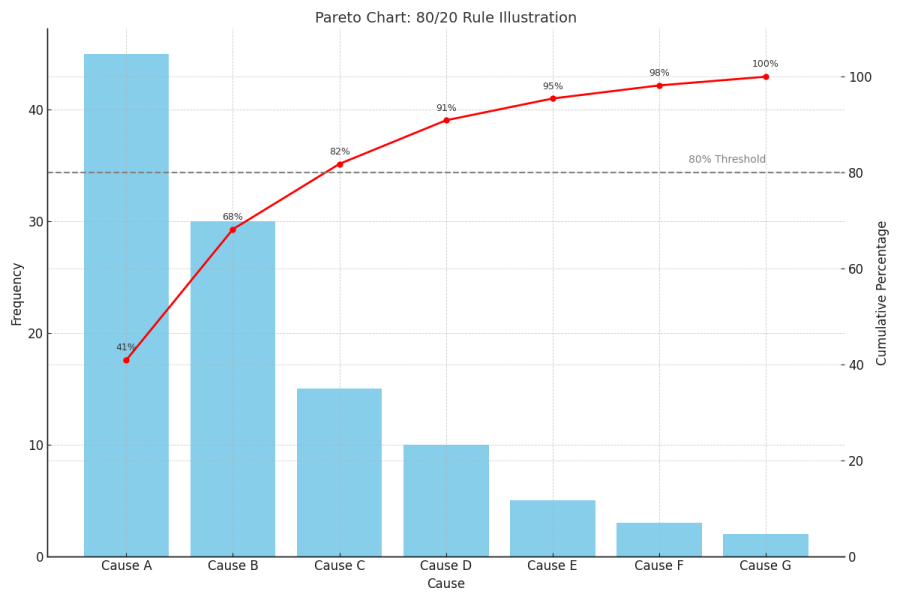
Step-by-Step Guide to Pareto Analysis
Here’s a structured approach to performing a Pareto analysis:
- Identify and List Problems/Causes: What are you trying to analyze? List all relevant factors (e.g., sources of customer complaints, sales by product, reasons for project delays).
- Choose a Standard Unit of Measurement: Select a consistent metric for comparison (e.g., frequency, cost, time, number of occurrences).
- Define the Time Period: Specify the timeframe for data collection (e.g., a week, month, quarter).
- Collect Data: Gather data for each category based on your chosen metric and time period. Ensure data accuracy.
- Rank Categories: Sort the categories from the largest impact to the smallest based on your collected data.
- Calculate Percentages: For each category, calculate its percentage of the total.
- Calculate Cumulative Percentage: Starting with the largest category, sum the percentages cumulatively. The last category should reach 100%.
- Construct a Pareto Chart (Optional but Recommended): Create a bar chart with categories on the x-axis (ordered from highest to lowest) and the measurement unit on the y-axis. Add a line graph representing the cumulative percentage.
| Step | Action | Description/Details | Key Considerations/Tips |
|---|---|---|---|
| 1. Define Categories | Group items/problems by common features. | E.g., types of defects, sources of complaints, expense items. | Categories should be clearly defined, mutually exclusive, and collectively exhaustive. |
| 2. Select Metric | Determine how to measure the impact of each category. | E.g., number of occurrences, cost, time spent. | Metric should be relevant and easily measurable. |
| 3. Set Time Period | Define the period for data collection. | E.g., week, month, quarter. | Period should be sufficient for representative data. |
| 4. Collect Data | Gather data for each category per the metric and time period. | Ensure accuracy and completeness. | Data integrity is crucial. |
| 5. Tally Category Totals | Sum the metric values for each category. | Simple summation. | Double-check calculations. |
| 6. Rank Categories | Sort categories by their total values, descending. | This is key to identifying the "vital few." | From most to least significant. |
| 7. Calculate Percentages | For each category, find its share of the total. | E.g., % of defects from total defects. | (Category Total / Grand Total) * 100. |
| 8. Calculate Cumulative % | Sum percentages sequentially, starting with the largest. | The last category should total 100%. | Helps identify the 80% cutoff. |
| 9. Build Chart (Optional) | Create a bar chart for values and a line for cumulative %. | Bars descend; line helps visualize the ~80% cutoff. | Visual representation aids understanding. |
| 10. Analyze Chart | Identify the "vital few" contributing most (up to ~80% cumulative). | Focus efforts here. Further analysis may be needed for root causes. | Decision-making step. |
Interpreting Pareto Charts for Actionable Insights
A Pareto chart visually highlights the "vital few." The tallest bars on the left represent the most significant factors. The cumulative percentage line helps you see where the 80% (or thereabouts) mark is hit. These are the areas where focusing your efforts will yield the greatest returns.
Alright, so we've got the 'what' and 'why' down. But how does this fascinating principle actually play out in the real world of commerce? You might be surprised!
The 80/20 Rule in Business: Real-World Applications & Examples
The versatility of the Pareto Principle allows it to be applied across numerous business functions:
Sales Optimization: Focusing on High-Value Clients
- Observation: Often, 80% of sales revenue comes from 20% of clients.
- Action: Identify these top-tier clients. Nurture these relationships with dedicated account management, loyalty programs, and personalized offers. Analyze what makes them high-value and seek similar prospects.
- Example: A software company finds that 15% of its enterprise clients generate 75% of its annual recurring revenue. They decide to assign senior account managers to these clients and develop an exclusive quarterly insights webinar for them.
Marketing Effectiveness: Maximizing ROI with Targeted Strategies
- Observation: Typically, 20% of marketing channels or campaigns generate 80% of leads or conversions.
- Action: Analyze campaign performance. Double down on the most effective channels and messaging. Optimize content that resonates most with your high-value audience segments.
- Example: An e-commerce store discovers that their organic search traffic and email marketing (2 channels) drive 82% of their sales, while paid social media ads (multiple platforms) only contribute 10% despite significant spend. They reallocate budget towards SEO and email list growth.

Productivity & Time Management: Achieving More by Doing Less (of the Trivial)
- Observation: 20% of your tasks or activities usually account for 80% of your valuable outcomes.
- Action: At the start of each day or week, identify the critical few tasks that will make the biggest impact. Prioritize these and tackle them first. Delegate or eliminate low-value tasks.
- Quote:
(Though not directly Pareto, it aligns with the spirit of focusing on importance over mere activity)."What is important is seldom urgent and what is urgent is seldom important."
Operations & Quality Control: Streamlining Processes and Reducing Defects
- Observation: 80% of production defects or operational delays often stem from 20% of causes or process steps.
- Action: Use Pareto analysis to pinpoint these critical causes or bottlenecks. Focus improvement efforts (like Kaizen or Six Sigma) on these areas for maximum impact on quality and efficiency.
- Example: A manufacturing plant identifies that two specific machine malfunctions (out of ten types) are responsible for 78% of production line stoppages. They prioritize a comprehensive overhaul and preventative maintenance schedule for these two machines.
Product Development: Building Features That Truly Matter
- Observation: Users often utilize 20% of a product's features 80% of the time.
- Action: Focus development resources on refining and enhancing these core, high-usage features. Be wary of "feature creep" – adding numerous low-impact features that can bloat the product and confuse users. Prioritize fixing the 20% of bugs that cause 80% of user issues.
- Example: A mobile app team analyzes usage data and finds that users spend most of their time on three key features. They decide to simplify the navigation to these features and invest in making them even more robust and user-friendly, rather than adding five new, less requested features.
Customer Service Excellence: Addressing Key Pain Points
- Observation: 80% of customer complaints or dissatisfaction often arise from 20% of product/service issues or process breakdowns.
- Action: Analyze complaint data to identify these recurring, high-impact problems. Prioritize resolving these root causes to significantly improve overall customer satisfaction and loyalty.
- Example: A telecom company finds that 80% of customer complaints are related to billing errors and unexpected charges (two main issues). They overhaul their billing system and improve transparency in their pricing communication.
Human Resources: Leveraging Talent and Solving Core Issues
- Observation: 20% of employees may generate 80% of the results or innovations. Conversely, 20% of HR issues might be causing 80% of employee dissatisfaction or turnover.
- Action: Identify top performers: understand their success factors, reward them, and see how their practices can be replicated. Address systemic issues that are causing most of the problems for the broader workforce.
- Example: A company notes that a small group of sales team members consistently exceeds targets. HR and sales management study their techniques, client interaction styles, and product knowledge depth to develop a new training program for the entire sales force.
Cost Reduction Strategies: Identifying Major Expense Drivers
- Observation: Roughly 20% of expense categories often account for 80% of total costs.
- Action: Analyze spending. Focus cost-cutting efforts on these major expense areas for significant savings, rather than making small, less impactful cuts across the board.
- Example: A retail business finds that inventory holding costs for its slowest-moving 20% of SKUs (which represent 80% of their storage space costs for those items) are disproportionately high. They implement strategies to reduce this slow-moving stock and optimize their purchasing for high-turnover items.
Leveraging Gincore: Applying the 80/20 Rule with Smart Business Tools
Let's be honest, understanding the 80/20 rule is the easy part. The real challenge? Consistently applying it amidst the daily chaos of running a business. That's where having a smart ally, like business management tools such as Gincore, can become invaluable. By automating processes, providing clear data insights, and centralizing operations, Gincore can help you identify and focus on your "vital few."
The Pareto Principle in Personal Life: Beyond Business
The 80/20 rule isn't confined to the boardroom. It has powerful applications in personal life too:
Personal Productivity and Goal Achievement
- Identify Your High-Impact Activities: Which 20% of your daily habits or tasks contribute to 80% of your happiness, health, or progress towards personal goals? Focus on these.
- Learning: 20% of study material or effort might yield 80% of your understanding or exam results. Prioritize core concepts.
Cultivating Meaningful Relationships
- Nurture Key Connections: Perhaps 20% of your relationships provide 80% of your personal support, joy, and inspiration. Invest your limited social energy wisely in these vital connections.
- Conflict Resolution: In partnerships, 80% of issues might stem from 20% of recurring problems. Addressing these core issues can lead to significant improvements.

Managing Personal Finances and Learning
- Finances: 20% of your spending habits might account for 80% of your total expenditures. Identifying and managing these can drastically improve your financial health. Similarly, 20% of your investments might generate 80% of your returns.
- Skills: 20% of the skills in a particular domain might be used 80% of the time or solve 80% of the problems. Focus on mastering these core competencies first.
Common Misinterpretations and Pitfalls of the 80/20 Rule
While powerful, the Pareto Principle can be misused or misunderstood:
- The "20% Effort" Myth: The rule states that 20% of causes lead to 80% of results, not that you only need to put in 20% effort for those vital few causes. Those critical 20% often require 100% of your focused effort.
- Rigid Fixation on Numbers: Don't get hung up on the exact 80/20 ratio. It's a guideline illustrating imbalance, not an unchangeable law. The ratio can vary.
- Ignoring the "Other 80%" Completely: While the "trivial many" are less impactful, they can't always be entirely neglected. Some of these tasks might be necessary maintenance or foundational work. The goal is to minimize, delegate, or streamline them, not necessarily eliminate them all if they serve a purpose.
- Static Application in Dynamic Environments: What constitutes the "vital few" can change over time as market conditions, customer preferences, or business goals evolve. Regular reassessment is crucial.
- Oversimplification of Complex Issues: Some problems have multifaceted, interconnected causes that can't be neatly reduced to a simple 80/20 split without losing critical nuance.
- Focusing on Frequency Over Severity: Prioritizing frequently occurring minor issues while ignoring less frequent but critical ones can be a mistake.
Expert Tips for Effective Implementation
To maximize the benefits of the 80/20 rule:
- Be Data-Driven: Base your analysis on actual data, not assumptions or gut feelings.
- Regularly Review and Adjust: Periodically re-evaluate your priorities. The "vital few" can change.
- Learn to Say "No": Focus requires declining or deprioritizing tasks and opportunities that fall outside your critical 20%.
- Understand Why the 20% are Successful: Don't just identify top performers or products; analyze the reasons for their success and try to replicate those factors.
- Use Pareto Charts for Communication: Visual tools can effectively communicate priorities to your team and stakeholders.
- Iterate: For complex problems, apply Pareto analysis layer by layer. Solve the top 20%, then re-analyze.
| Advice Category | Specific Recommendation | Rationale/Benefit |
|---|---|---|
| Data Analysis | Base decisions on factual data, not intuition. | Ensures objectivity in identifying the "vital few." |
| Data Analysis | Regularly collect and analyze relevant data. | Allows tracking changes and adapting strategy. |
| Prioritization & Focus | Clearly define the "vital few" tasks/clients/products. | Concentrates resources for maximum impact. |
| Prioritization & Focus | Learn to say "no" to low-impact tasks and distractions. | Preserves focus on priorities. |
| Continuous Improvement | Regularly review and adjust 80/20 priorities. | Keeps the principle relevant in dynamic environments. |
| Continuous Improvement | Analyze why the top 20% are successful. | Enables replication of success and improvement of less effective elements. |
| Process Approach | Identify and document the 20% of key processes generating 80% of results. | Simplifies standardization, training, and optimization. |
| Iterative Application | For complex problems, apply Pareto analysis layer by layer. | Allows gradual, focused resolution of significant components. |
| Visualization & Comm. | Use Pareto charts to represent data and justify priorities. | Facilitates understanding and decision-making. |
Frequently Asked Questions (FAQ) about the 80/20 Rule
Q1: Is the 80/20 rule always exactly 80% and 20%?
A: No, the ratio is an approximation. It could be 70/30, 90/10, or another variation. The key insight is the imbalance: a minority of inputs often leads to a majority of outputs.
Q2: Can the 80/20 rule apply to any industry or situation?
A: It's surprisingly versatile and has been observed in countless domains, from business and economics to personal habits and natural phenomena. However, it's a guideline, not a universal law, so critical thinking is always needed.
Q3: How often should I conduct a Pareto analysis?
A: It depends on the dynamism of your environment. For fast-changing areas like marketing campaigns or tech projects, more frequent reviews (e.g., quarterly or monthly) might be needed. For more stable areas, annually or semi-annually could suffice.
Q4: What if I focus on the 20% and neglect important foundational tasks in the 80%?
A: The goal isn't wholesale neglect of the "other 80%." It's about recognizing their lower direct impact and finding ways to manage them more efficiently—through automation, delegation, simplification, or strategic minimal attention—so you can dedicate prime energy to the vital few.
Q5: How can I automate management processes to better apply the 80/20 rule?
A: Tools like Gincore are designed for this. By automating routine operations, centralizing client data, streamlining task management, and providing clear performance reports, Gincore helps you identify your most valuable activities (the 20%) and reduce time spent on less impactful ones (the 80%). This allows you and your team to focus on strategic growth and high-value customer interactions.
Q6: Where can I learn more about the Pareto Principle?
A: Key resources include books by Richard Koch (like "The 80/20 Principle") and works related to Dr. Joseph Juran for quality management applications. Reputable business publications and academic databases also offer insights.
Conclusion: Embrace the Power of Focus
The 80/20 Principle is more than just an interesting observation; it's a practical tool for radical transformation in both business and personal life. By consistently identifying and prioritizing your "vital few," you can unlock new levels of productivity, efficiency, and success. It challenges us to move beyond simply doing more, and instead, focus on doing more of what truly matters.
So, here's a little challenge for you today: take a moment, grab a coffee, and really think – what's your 20%? What are those few vital things in your business or life that, if you poured your focused energy into them, could unlock an incredible 80% of your desired results? The answer might just surprise you, and it could be the first step towards a more focused, effective, and fulfilling journey.
Disclaimer: This article provides a comprehensive overview and practical advice. For specific business decisions, always combine principles like the 80/20 rule with thorough analysis and professional judgment.

.png)




